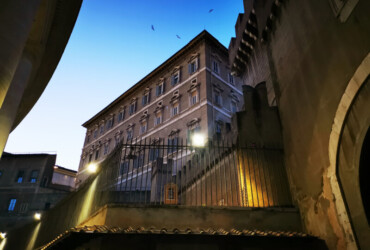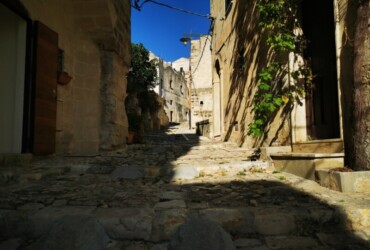At Fiumicino, on the borders of the Leonardo da Vinci airport, there is the Archaeological Park of the Ports of Claudius and Trajan. I wanted to visit it for some time, given the historical importance, and I took the occasion of my first day at sea (for this summer of 2018) to go there. The visit turned out to be an exciting and informative experience, much more than I imagined and I already knew it would be, and today I want to take you too to discover this place full of history.
 The first to be built was the port of Claudius, to remedy the reduced efficiency of the port of Ostia (the population increased and served a larger port): construction work began in 42 AD and was completed in 64 AD, under Nero. The seaport occupied about 200 hectares of surface and also included channels that served to contain the floods of the Tiber, but proved to be insecure and problematic in the event of storms.
The first to be built was the port of Claudius, to remedy the reduced efficiency of the port of Ostia (the population increased and served a larger port): construction work began in 42 AD and was completed in 64 AD, under Nero. The seaport occupied about 200 hectares of surface and also included channels that served to contain the floods of the Tiber, but proved to be insecure and problematic in the event of storms.
 The emperor Trajan decided to “restructure” it, in the 2nd century AD: he had an internal hexagonal basin excavated, connected to the port of Claudius by an internal canal and he had a second external canal built for a better connection with the river and the sea (it should be today’s Fiumicino channel). From the same period is the port of Civitavecchia (Centumcellae), 80 km north of Rome. Thus the city of Portus, the logistics centre and the principal maritime port of the capital of the empire, was born.
The emperor Trajan decided to “restructure” it, in the 2nd century AD: he had an internal hexagonal basin excavated, connected to the port of Claudius by an internal canal and he had a second external canal built for a better connection with the river and the sea (it should be today’s Fiumicino channel). From the same period is the port of Civitavecchia (Centumcellae), 80 km north of Rome. Thus the city of Portus, the logistics centre and the principal maritime port of the capital of the empire, was born.
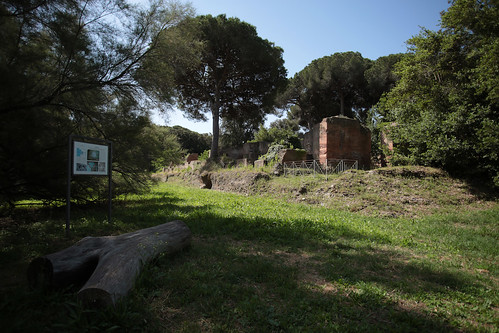 Now I would say to enter a little more specifically, regarding the two port facilities. We start again from the Port of Claudius, began under Claudius and inaugurated by Nero: it was supposed to be a dock for loading and unloading goods from ships that came here, on boats that could go up the river to Rome. The port was built partly on land and somewhat towards the sea. On an artificial island was placed a lighthouse (“imitation” of the one in Alexandria of Egypt) to signal the entrance of the port.
Now I would say to enter a little more specifically, regarding the two port facilities. We start again from the Port of Claudius, began under Claudius and inaugurated by Nero: it was supposed to be a dock for loading and unloading goods from ships that came here, on boats that could go up the river to Rome. The port was built partly on land and somewhat towards the sea. On an artificial island was placed a lighthouse (“imitation” of the one in Alexandria of Egypt) to signal the entrance of the port.
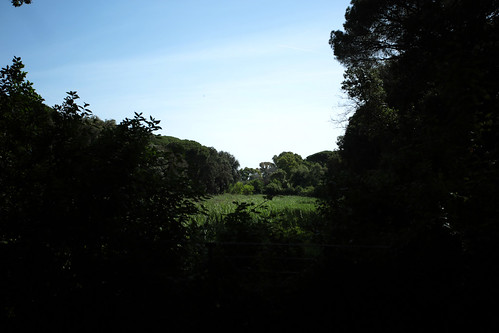 Between what is now the ships museum and the buildings of the airport there was another entrance and the project included a series of artificial canals including the Fossa Traiana, which served to connect the port, the Tiber and then Rome. The plan of the first century AD it provided a dock, intended for smaller boats and connected to the Fossa Traiana through another the transversal channel. Behind the ship museum, there are the foundations of one of the great piers, and it is possible to visit buildings such as the Capitaneria, a cistern and the spa buildings (it seems to be from the 2nd century AD, then following the port of Claudio).
Between what is now the ships museum and the buildings of the airport there was another entrance and the project included a series of artificial canals including the Fossa Traiana, which served to connect the port, the Tiber and then Rome. The plan of the first century AD it provided a dock, intended for smaller boats and connected to the Fossa Traiana through another the transversal channel. Behind the ship museum, there are the foundations of one of the great piers, and it is possible to visit buildings such as the Capitaneria, a cistern and the spa buildings (it seems to be from the 2nd century AD, then following the port of Claudio).
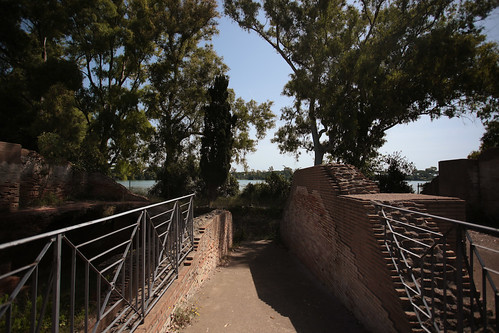 The fulcrum of the Port of Trajan structure was the hexagonal basin, built (probably) between 110 and 117 AD and whose construction did not lead to the disposal of the port of Claudius. It seems that the basin could hold up to 200 large ships at the same time. Around this basin were built warehouses for goods that arrived here by sea and river. There where also a temple, an imperial palace and a spa complex.
The fulcrum of the Port of Trajan structure was the hexagonal basin, built (probably) between 110 and 117 AD and whose construction did not lead to the disposal of the port of Claudius. It seems that the basin could hold up to 200 large ships at the same time. Around this basin were built warehouses for goods that arrived here by sea and river. There where also a temple, an imperial palace and a spa complex.
 Finally, there are the remainings of the buildings in where there shipyards. Today the city of Portus is a vital centre for understanding how, in Roman times, the accommodation and storage facilities of all the goods arriving by sea would work. In the fifteenth century, the area of the ports was now a swamp area; the reclamation works began in 1924 thanks to Giovanni Torlonia, who wanted to turn the site into a model agricultural estate. In 1997-1998 the intervention was carried out which transformed the area of the imperial ports into a Natural Archaeological Park.
Finally, there are the remainings of the buildings in where there shipyards. Today the city of Portus is a vital centre for understanding how, in Roman times, the accommodation and storage facilities of all the goods arriving by sea would work. In the fifteenth century, the area of the ports was now a swamp area; the reclamation works began in 1924 thanks to Giovanni Torlonia, who wanted to turn the site into a model agricultural estate. In 1997-1998 the intervention was carried out which transformed the area of the imperial ports into a Natural Archaeological Park.
Opening time:
from 22 April to 2 July and from 2 September to 26 November 2017
from 9.30 to 18
–
The rest of the year is open by appointment from 8.30 to 13.30. For reservations, please call 06 6529192. The security staff performs a reception service to the public.
Closed on Monday, December 25th, January 1st and May 1st.
–
There is the possibility to participate in workshops and guided tours for groups, by reservation by mail (prenotazioni@navigareilterritorio.it or WhatsApp +39.337.1175780)
Tickets: Free admission


